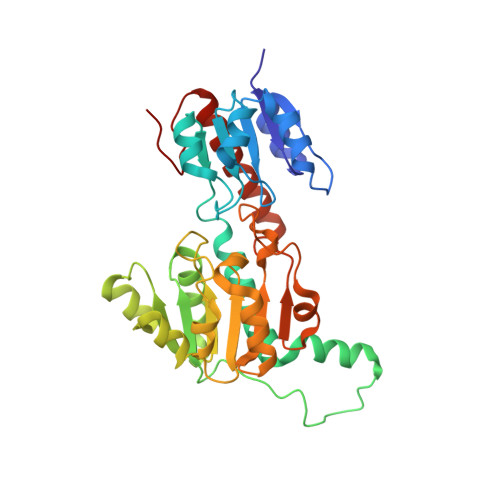Crystal structures of phosphite dehydrogenase provide insights into nicotinamide cofactor regeneration.
Zou, Y., Zhang, H., Brunzelle, J.S., Johannes, T.W., Woodyer, R., Hung, J.E., Nair, N., van der Donk, W.A., Zhao, H., Nair, S.K.(2012) Biochemistry 51: 4263-4270
- PubMed: 22564171
- DOI: https://doi.org/10.1021/bi2016926
- Primary Citation of Related Structures:
4E5K, 4E5M, 4E5N, 4E5P, 4EBF - PubMed Abstract:
The enzyme phosphite dehydrogenase (PTDH) catalyzes the NAD(+)-dependent conversion of phosphite to phosphate and represents the first biological catalyst that has been shown to conduct the enzymatic oxidation of phosphorus. Despite investigation for more than a decade into both the mechanism of its unusual reaction and its utility in cofactor regeneration, there has been a lack of any structural data for PTDH. Here we present the cocrystal structure of an engineered thermostable variant of PTDH bound to NAD(+) (1.7 Å resolution), as well as four other cocrystal structures of thermostable PTDH and its variants with different ligands (all between 1.85 and 2.3 Å resolution). These structures provide a molecular framework for understanding prior mutational analysis and point to additional residues, located in the active site, that may contribute to the enzymatic activity of this highly unusual catalyst.
Organizational Affiliation:
Department of Biochemistry, University of Illinois at Urbana-Champaign, 600 South Mathews Avenue, Urbana, IL 61801, USA.
















